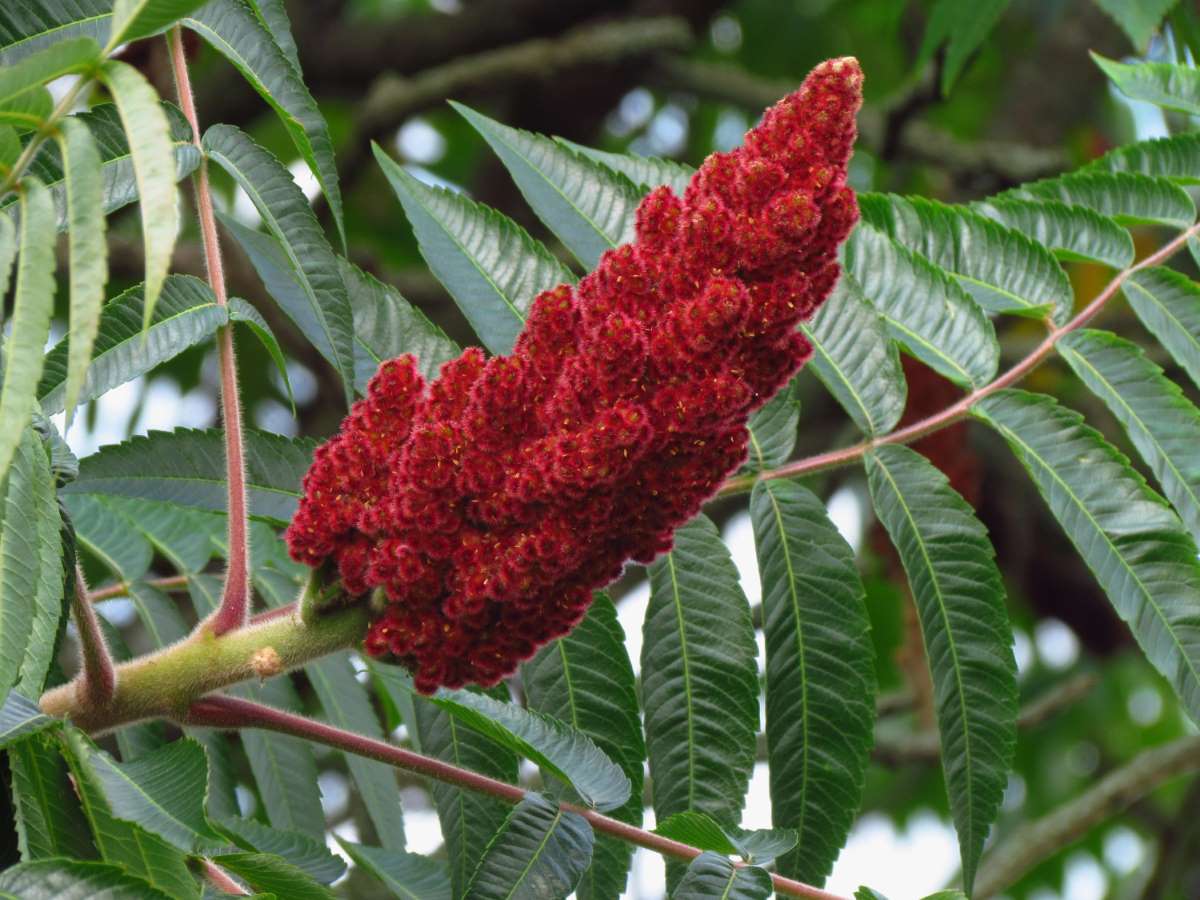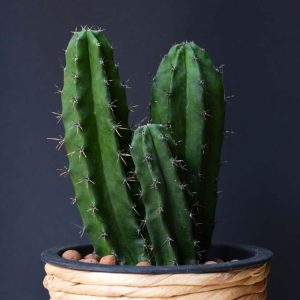Description
Rhus – Toxicodendron – Sumac –
There are between 200-250 species of deciduous or evergreen shrubs, trees, and woody climbers, in the Anacardiaceae family, in this genus. They are found widely distributed in temperate and subtropical North America, Southern Africa, Eastern Asia and Northeastern Australia in woodlands, thickets, dry sites, bogs, and rocky slopes. Sumacs are grown for their alternate, simple, pinnate, or palmate leaves, which in many species and cultivars turn brilliant shades of yellow, red, or orange in autumn, some also produce showy fruit clusters. The inconspicuous 5 petaled flowers, usually 1/16″ across, are borne in spring or summer in dense terminal, normally erect, ovoid, or conical to pyramidal panicles in creamy white, greenish or red. In autumn the flowers are followed by spherical,, usually red fruits, up to 1/4″ across in dense clusters called sumac bobs. R. glabra, R. xx pulvinata, and T. typhina usually produce male and female flowers on separate plants, plants of both sexes must be grown together to obtain fruit. Grow in a shrub border or woodland garden, or as specimen plants. All parts of R. verniciflua are highly toxic if ingested, contact with the foliage, and that of a number of related species including R. succedanea, causes dermatitis and may aggravate skin allergies.
Grow in moist but well drained, moderately fertile soil, in full sun to obtain best autumn color, with shelter from wind. Tolerant of air pollution.
Prone to powdery mildew, Verticillium wilt, wood rot, leaf spot, blister, canker, dieback, scale insects, and caterpillars.
R. typhina – R. hirta – Staghorn Sumac – Velvet Sumac – This upright, suckering, deciduous shrub or small tree from Eastern North America grows at least 15′ feet tall and 12-20′ feet wide. From densely velvety red shoots, resembling a stag’s horns carries pinnate leaves, to 24″ long, composed of 11-31 toothed, oblong-lance shaped, dark green 6″ leaflets, that turn flame-red in autumn. In summer it bears yellow-green flowers in erect, conical panicles, to 8″ long. On female plants the flowers are followed by dense clusters of spherical, felt red fruit.
Zones 3-8




